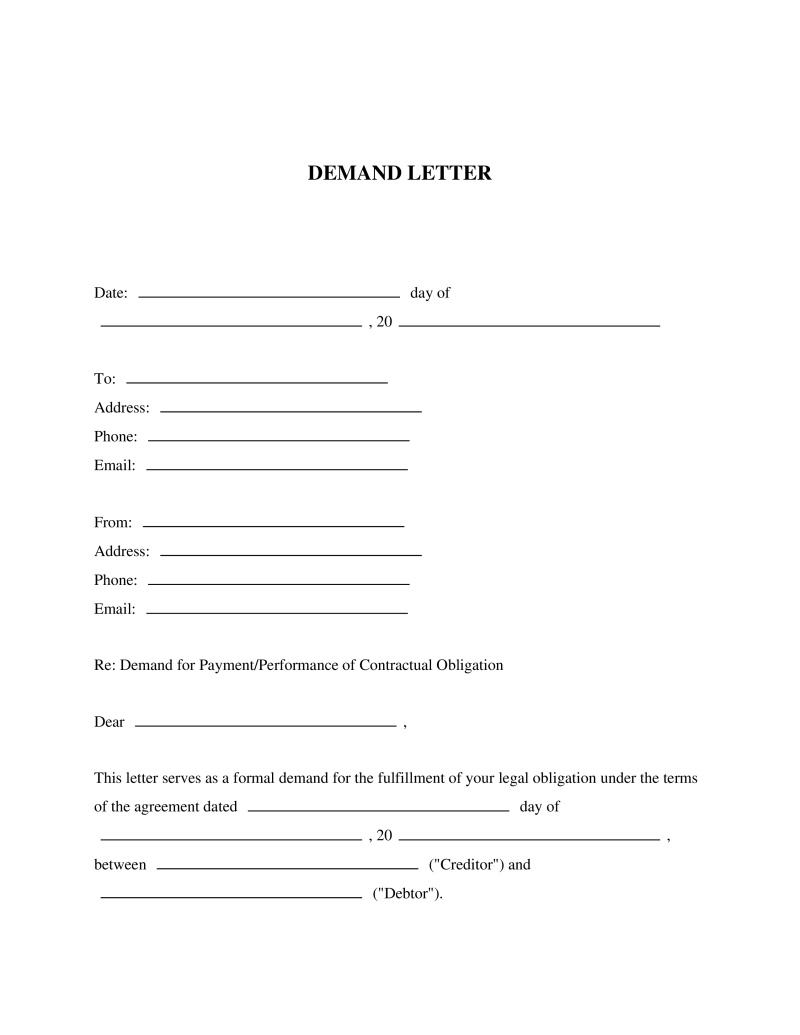A demand letter is a formal document requesting payment or action, serving as a precursor to legal action in disputes.
Sender Name
Enter the full legal name of the individual or entity sending the demand letter.

Table of Contents
What is a Demand Letter?
A Demand Letter is a formal legal document used to request a party to rectify a wrong, such as failing to fulfill a contractual obligation, causing damage, or infringing on rights. It is typically the first step in a legal dispute, serving as a formal notice to the recipient about the issue and the actions required to rectify it. The primary purpose of a demand letter is to resolve disputes before they escalate into legal proceedings.
Key Features
Pros and Cons
A demand letter serves as a formal record of your efforts to resolve a dispute before taking legal action. It lays out your claim clearly, reducing ambiguities and misunderstandings. This letter also sets a deadline for the other party to meet your demands, which is helpful if you later need to prove in court that you gave them a reasonable opportunity to rectify the situation.
Pros
Cons
Common Uses
Broadly, anyone who needs to formally communicate a demand to another party can use a Demand Letter. This includes individuals seeking repayment for a personal loan, businesses trying to recover unpaid invoices, or property owners seeking damages from tenants. It also extends to lawyers representing clients in these situations.
FAQs About Demand Letters
- A clear explanation of the issue
- The actions you require the recipient to take
- The deadline for the recipient to meet your demand
- The legal consequences if your demand is not met
Do you have a question about a Demand Letter Template?
Example questions:
Not the form you're looking for?
Try our legal document generator to create a custom document
Community Discussion
Share your experience and help others
Legal Notice: Comments are personal opinions and do not constitute legal advice. Always consult a qualified attorney for matters specific to your situation.
Comments (0)
Leave a Comment
No comments yet. Be the first to comment!